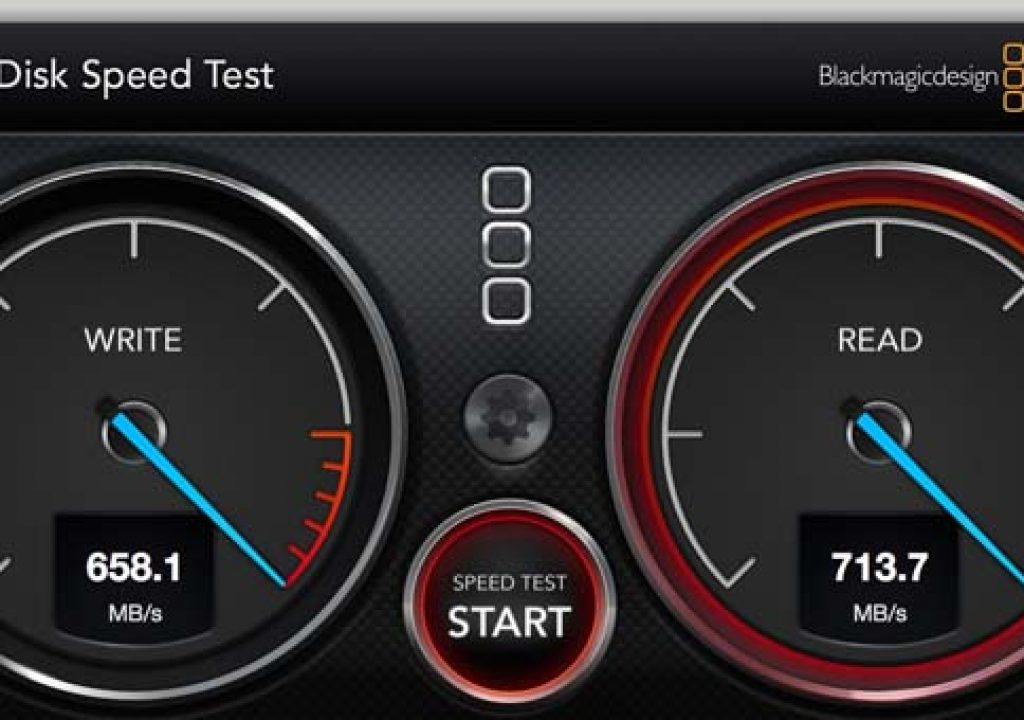As a freelance editor I get a lot of hard drives sent to me with footage to edit. Usually all of that media is transferred off of those hard drives and onto a RAID for editing. Occasionally I might have a quick turnaround or just fixes on a project and I’ll cut right off the hard drive sent to me. The faster the drive the better for both of these tasks. I’ve been keeping a running log of hard drive speeds for the last few months and with the help of Blackmagic’s Disk Speed test I offer up this cornucopia of various drive speed tests and their connections. Little commentary is provided here but if you have a production asking why you’re questioning their use of a cheap little black Seagate drive from Target then send them to this blog post to see exactly what slow speeds that cheap drive will mean and how that will add time to editorial because of file transfers alone.
Why write this post? I often get sent a USB3 drive with the thought from production that it’s a fast drive because it’s USB3. Usually it’s not because it’s a tiny portable drive with a slow mechanism inside. A drive is only going to be as fast as the bottleneck in the drive chain. If you plug one of those cheap USB3 drives from Walgreens into your new Mac Pro expecting lightning fast transfer to your Thunderbolt RAID you’ll be disappointed.
To illustrate these drive speeds I went with Blackmagic Disk Speed Test. While there are some alternatives when it comes to testing disk read/write speed the big Blackmagic Disk Speed Test speedometers are easy to read. I have cropped off the Will it Work? and How Fast? portion of each image as that made for a lot of extra clutter and a really long post.
While we’re on the subject of Blackmagic Disk Speed Test, isn’t it time BMD (or anyone else who wants to create a video-centric disk speed test) add 4K and Ultra HD resolutions to the mix? Better than that how about adding some codec specific options to the test since most people aren’t working with uncompressed footage; specifically ProRes and DNxHD since that’s what those of us in post-production that do a lot of drive speed testing are working in!
Take all of these speeds with a bit of a grain of salt as some of these drives were brand new and empty while some were over half full. A drive’s speed will be reduced a bit as the drive fills up but overall you can still get a good idea of a drive’s speed. This isn’t a scientific test but rather a running list that has been kept of drives that come through the edit suite. I get drives of all different brands, shapes and sizes but one thing they have in common as they usually always have a lot of data on them. Pretty much every portable drives tested below were well half full in their capacity unless otherwise noted. None of them were maxed out as far as space go and every one had at least 100 GB still available. Here we go.
Other World Computing ThunderBay IV
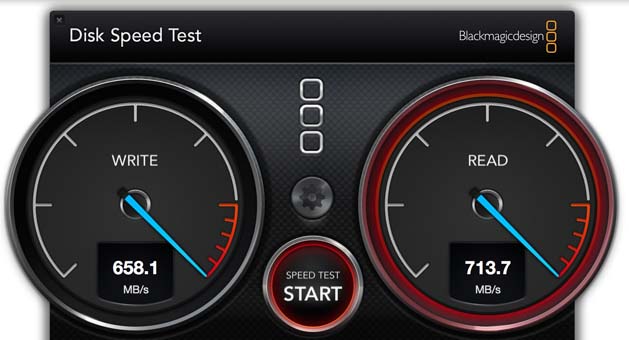
This is about a nice as an editing RAID gets. An Other World Computing ThunderBay IV is a Thunderbolt 1 connected RAID 0. This particular version tested is a 12 terabyte version stripped across four disks. Since this testing OWC has introduced their Thunderbolt 4 which is the same enclosure form factor but with the Thunderbolt 2 protocol.
Other World Computing Mercury Elite Pro Qx2
A nice comparison to the Thunderbolt OWC drive above is their Mercury Elite Pro Qx2. It’s essentially the same RAID enclosure without the Thunderbolt connection. It can connect via USB3, eSATA or Firewire 800. Just one look at the eSATA RAID0 connection of the Mercury Elite Pro compared to the Thunderbolt connection and you can see just how fast the Thunderbolt protocol is.
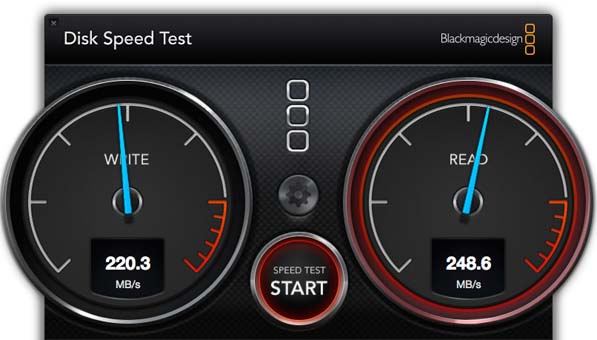
The Mercury Elite Pro Qx2 can be both a RAID 0 and RAID5 configuration. Above is the drive speed test in RAID 0.
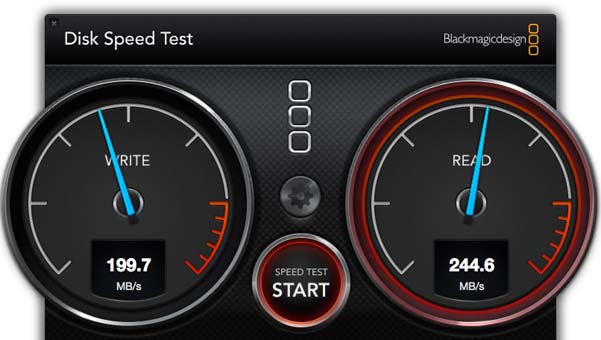
This is the same drive but reconfigured as RAID 5. This provides some protection but a reduced capacity in on the drive. I expected the RAID 5 configuration to be quite a bit slower than that of RAID 0 but it really isn’t.
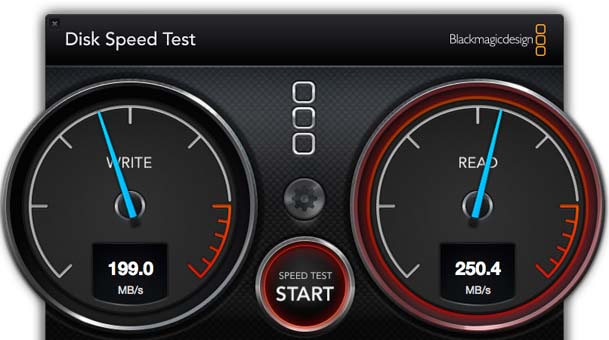
The Qx2 also has a USB connection as does the old Mac Pro host PCI card that OWC and other vendors sell. It’s just slightly faster than the eSATA connection.
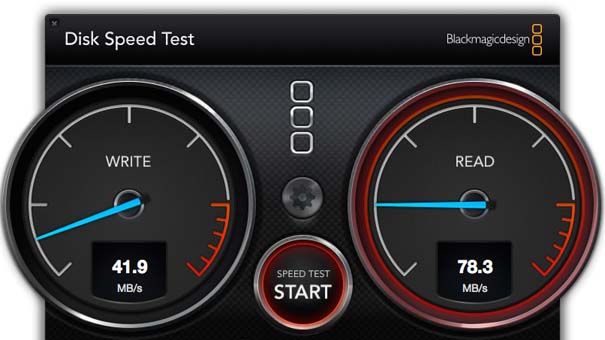
And then there is the slowness of Firewire 800 which is also an option on the Qx2. You can see where the bottleneck is right there.
Little black Seagate drives
I’ve found these little black USB 3.0 Seagate drives to be a popular choice coming from the set and I think it’s because Target had a big sale on them at one point last year. I actually bought a couple myself as backup drives. While they are USB3 they are not very fast. And this is an important point to understand: just because it says USB 3.0 does not mean it’s going to be fast when compared to other drive options as these little drives have a bottleneck with the slow internal drive mechanism.
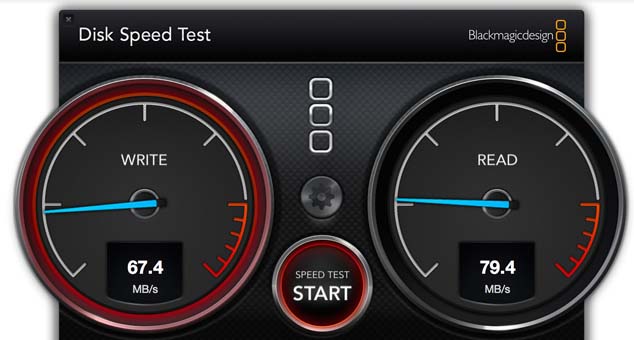
The Seagate Backup Plus Portable. That’s about what to expect off a tiny USB 3.2 drive. This was a 1 TB drive with 400 GB free.
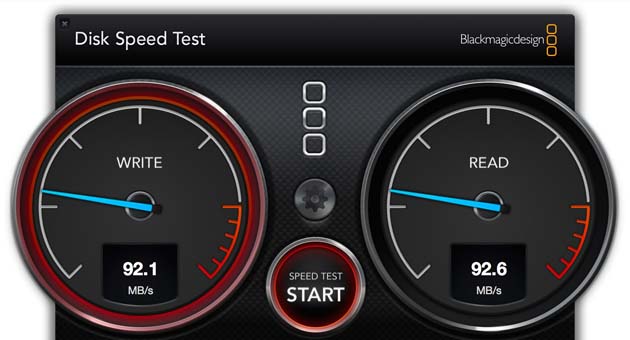
Here’s a different Seagate Backup Plus Portable 1 TB drive that has 600 GB free that’s running some 20 MB/s faster. I wouldn’t have thought that 200 GB would have that much of an impact on the speed. I even checked the cables to make sure it wasn’t something in the cable itself.
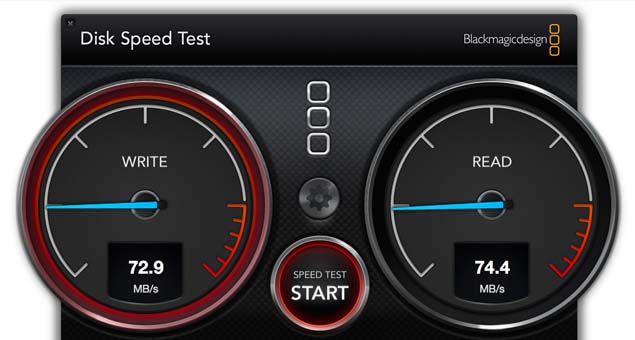
The Seagate Expansion Portable hard drive. While nearly identical in size in design these are two different product lines as far as I can tell.
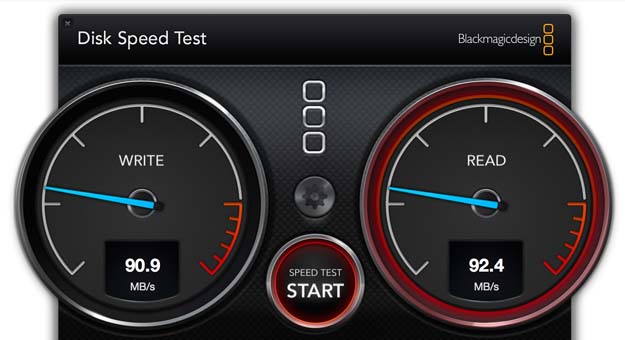
I was curious as to how much faster one of these little Seagate drives might be if it was completely empty. Here’s the Seagate Expansion Portable above clean after a reformat in Disk Utility. That did speed it up a bit.
Western Digital My Passport drives
The Western Digital My Passport series has been a popular small, cheap and light storage options for quite awhile and WD has made several different models over the years. Here’s a couple that have passed through my edit suite.
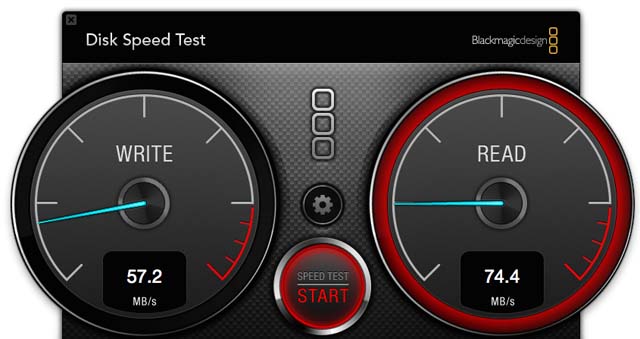
This Western Digital My Passport Mac USB 3 drive has good capacity but not much speed.
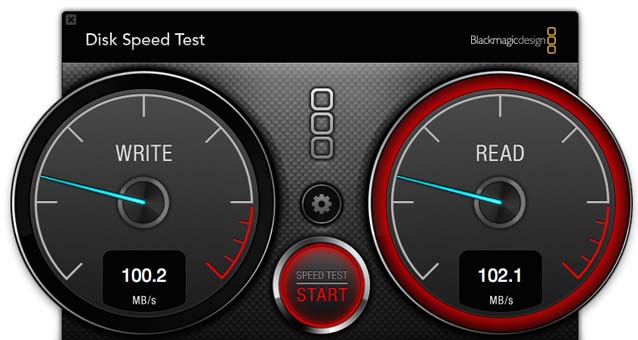
You can see the upgraded WD My Passport Ultra Mac USB 3 gets a nice jump in speed.
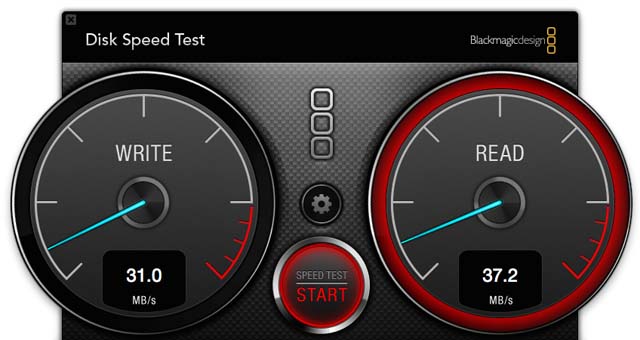
For comparison here’s that My Passport Ultra via the USB 2 connection to see just how much slower that USB 2.0 really is.
Since we’re talking about USB 3.0 let’s take a look at a few single drive options for USB 3.0 that are geared more toward video professionals. These drives are what I recommend to productions when they ask what works best for post-production as far as good, reliable, fast backup and archive drives that won’t break the bank. I’ve done offline edits right off of these types of drives.
CalDigit AV Pro
One the one hand the CalDigit AV Pro could be considered similar to the Seagate above in that it’s single spinning disk USB3 drive but the similarities end there. The CalDigit AV Pro is everything the Seagate is not: Optimized for speed and designed for video work. The AV Pro uses “an exciting new transfer protocol called UAS (USB attached SCSI)” and while I don’t quite understand all of that it makes the connection fast then that’s a good thing.
Like most CalDigit products you can utilize their replaceable hard drive system and purchase their drive modules which include mounting hardware to easily and quickly slide the drive in and out as well as a storage case. They are a bit more expensive than a bare hard drive you might buy off of Amazon but if you’re using the CalDigit system you’ve got an easy to organize option right at your fingertips.
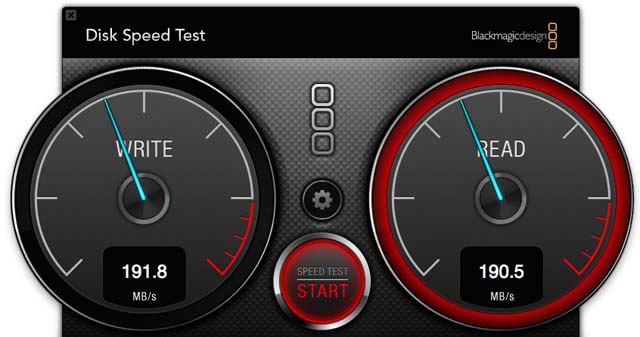
That is some very good speeds via USB 3.0 on the CalDigit AV Pro. This is a single, spinning 3.5″ drive. SSDs are available in this enclosure as well.
Other World Computing Mercury Elite Pro
The Other World Computing Mercury Elite Pro is the other option I often recommend for productions. It’s available with both spinning disks and HHDs. They offer one of the enclosure options with USB 2 and 3, eSATA and FireWire 800. That covers most every connection.
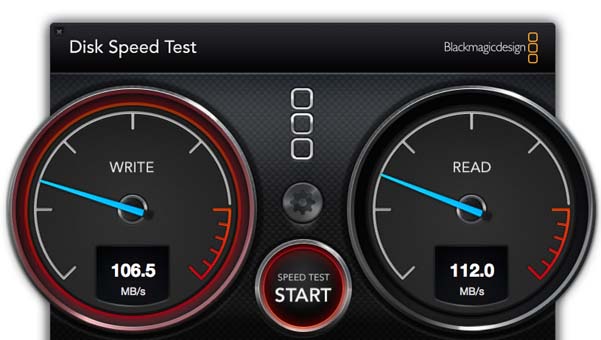
The OWC website claims “Data transfer rates up to 300MB/s” which I’m guessing is an SSD. Above is a spinning disk connection via USB 3.0 to an eSATA/USB 3.0 PCI card in an old Mac Pro.
Western Digital My Book
Unfortunately productions often don’t take the advice of post-production and leave their shoots with high quality hard drives. It might be one of those cheap Seagate or Western Digital drives but sometimes it might be a physically larger drive from a quick trip to Best Buy like this Western Digital My Book:
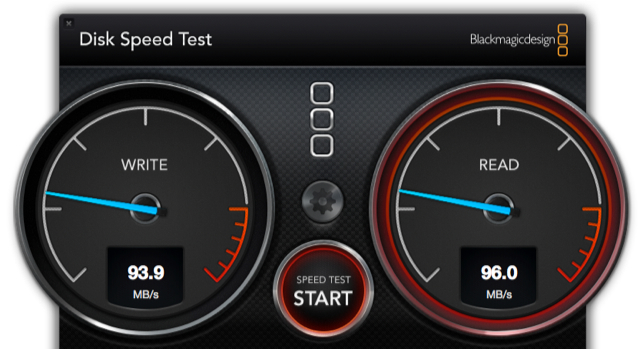
I've had a couple of My Books over the years as add on USB storage for things like music and photos. They've worked well for that. This is a USB 3.0 connection.
LaCie Rugged portable
One popular option over the years has been the LaCie Rugged series. The name might be what attracts many since hard drives out in the field can get jostled around quite a bit but according the LaCie they are “drop resistant” at up to 4 feet. While the come in SSD versions which will be much faster than the spinning drive versions I’ve only encountered the 1 and 2 TB spinners. This one brings up some interesting figures.
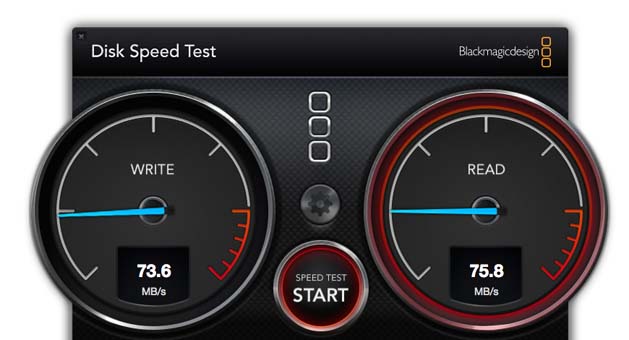
Here is the LaCie Rugged attached via USB 3.0 to the CalDigit USB 3.0 card on the old Mac Pro.
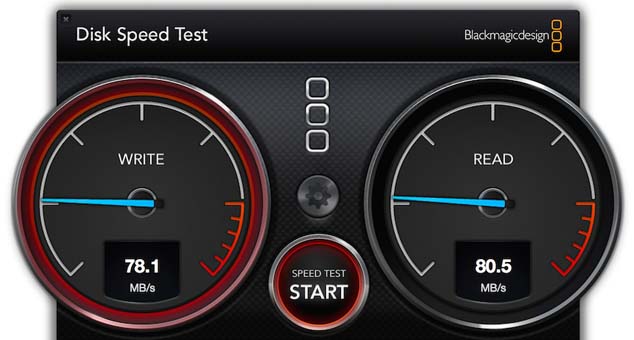
Here is that same drive attached via USB 3.0 to a new Retina Macbook Pro right after it was tested on the old Mac Pro. It get just a bit more speed out of the laptop.
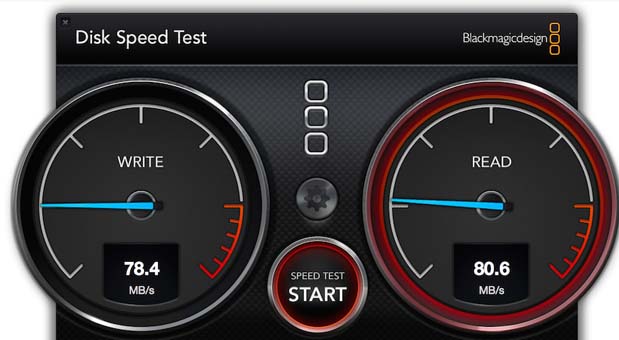
Here’s that same LaCie Rugged drive on the Retina Macbook Pro via Thunderbolt, moments after the USB 3.0 test. The bottleneck is most likely the drive itself and you don’t really gain any speed on this drive with the Thunderbolt connection. And since there’s only one Thunderbolt port you can’t daisy chain off of this drive. You can probably save some money and just go with the non-Thunderbolt version of the LaCie drive. While I didn’t have one of those to test of you know of a reason to still get the Thunderbolt version of the LaCie Rugged then please let us know in the comments below.
LaCie Rugged Protable SSD
UPDATE 9-12-2014: Here's a look at the SSD version of the LaCie Rugged portable drive courtesy of @Kris_Merkel
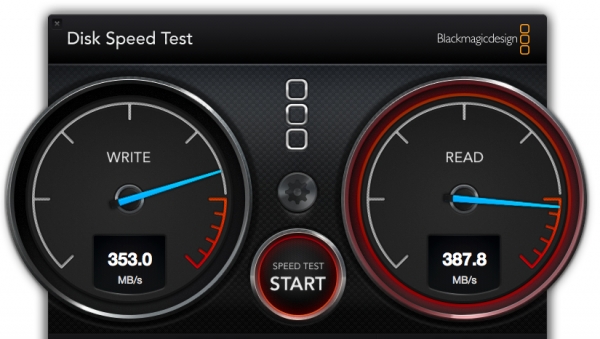
This is the connection of the LaCie Rugged SSD via Thunderbolt.
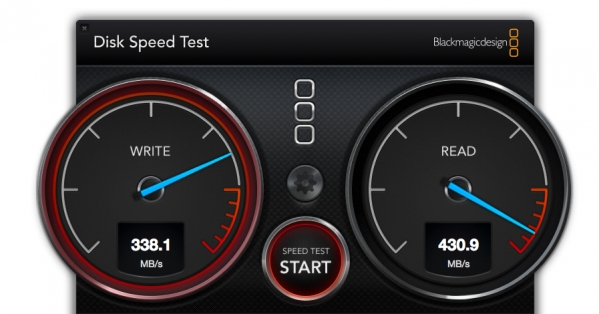
And the big surprise, connection via USB 3.0 is faster. Not sure why that is but there ya go. Kris also tested the speed with AJA's System Test.
OWC Mercury On-The-Go Pro
Here’s another option for small, affordable portable drives. I’ve used an older Firewire Mercury On-The-Go for years but recently I had a couple of the newer USB 3.0 versions come through the edit suite.
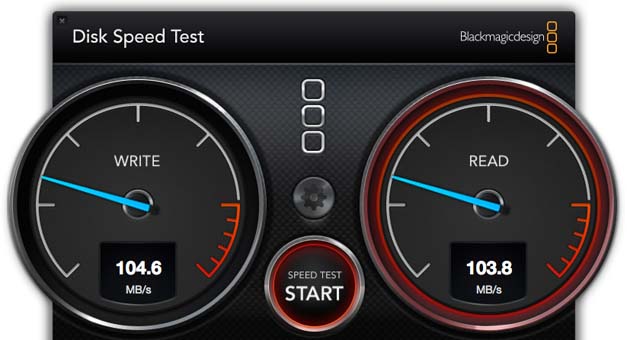
I was surprised at that speed above as that’s quite a bit faster than most of the other small USB 3.0 drives.
NewerTech Voyager drive dock
Drive docks are a nice thing to have around. I have a NewerTech Voyager dock that has served me well for years.
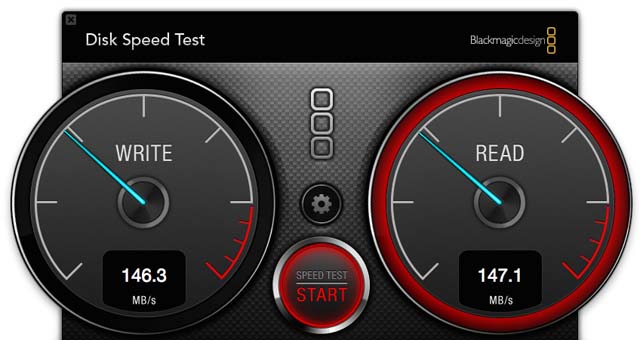
eSATA on the old Mac Pro is the connection for this speed test via a hard drive dock.
Internal RAID on old Mac Pro
Since I have two 2 TB drives RAIDed together inside my old Mac Pro I thought that was worth a look to see what speed it is currently maintaining. If you think about how fast this, affordable and easy to install and setup this internal RAID is on this old Mac Pro it’s no wonder people really like this as a configuration. You can stuff more drives into an old Mac Pro to get even more speed.
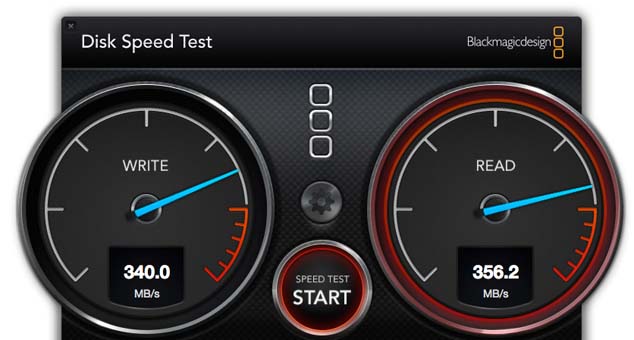
As you can see above it’s plenty fast for ProRes workflows. It’s not protected with any kind of redundancy (other than my own manual backup) but it’s a cheap and fast storage option that’s always mounted and available.
AKiTio Neutrino Thunder Duo
This little SSD Thunderbolt RAID is one of the two drives I wrote about in the recent A Tale of Two Thunderbolt Drives. SSD RAIDs are fast.
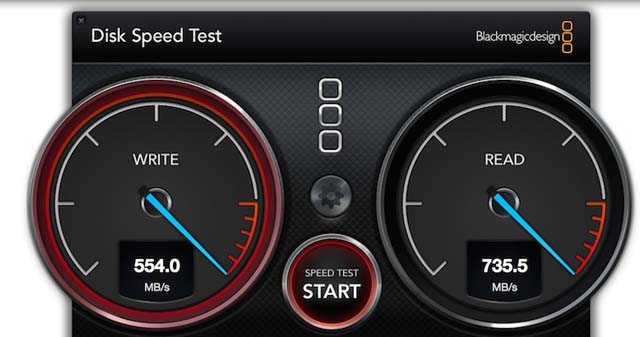
While capacity isn’t huge on an SSD RAID the 500 GB unit that I have has been plenty for storing a single job at a time.
And there’s FireWire
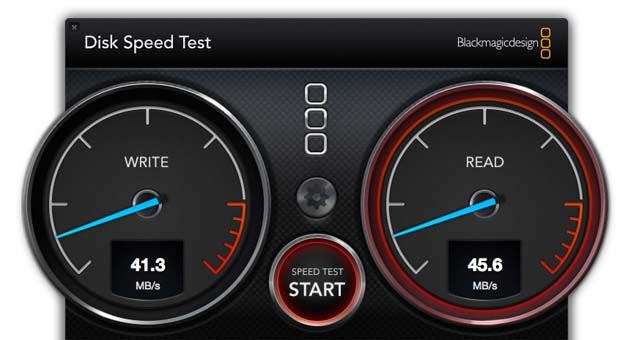
There are a lot of people out there still dependent on Firewire 800 and seeing Firewire 800 speeds via the big Blackmagic Disk Speed Test speedometer right next to a lot of faster protocols shows just how slow Firewire 800 really is. There's really not excuse not to move beyond Firewire 800 (unless you're on an old iMac) as you can get very affordable USB 3 cards for your old Mac Pro.
That’s a pretty good list. I’ll continue to update this post if I get a drive through the edit suite that seems significant to the post-production industry. As I mentioned above this isn’t by any means a scientific test and there are many factors that go into a hard drive’s read/write speed including how full a drive might be when reading and writing to it. But the big Blackmagic Disk Speed Test speedometers give a nice at-a-glance look at drive performance.

Filmtools
Filmmakers go-to destination for pre-production, production & post production equipment!
Shop Now